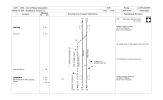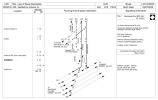90sWereBetter
Member
I had several journeys on this line in the past week, and I noticed that the overhead gantries look almost ancient. This is very noticeable east of Guide Bridge where the line to Stalybridge is slowly being electrified, the shiny new equipment on one side and the massive iron contraptions heading towards Hadfield. I presume this is original equipment from the Woodhead line electrification programme?
There's also some gantries where only half of the formation is wired up (particularly between Ashfields and Guide Bridge. I presume once again this is a legacy of the Woodhead line being descoped and closed east of Hadfield?
There's also some gantries where only half of the formation is wired up (particularly between Ashfields and Guide Bridge. I presume once again this is a legacy of the Woodhead line being descoped and closed east of Hadfield?


